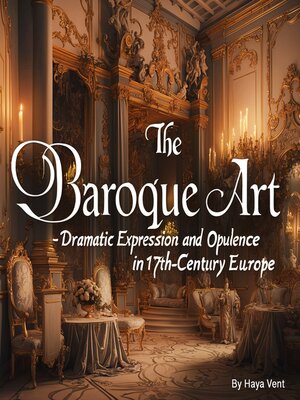The Baroque Art
audiobook (Unabridged) ∣ Dramatic Expression and Opulence in 17th-Century Europe
By Haya Vent

Sign up to save your library
With an OverDrive account, you can save your favorite libraries for at-a-glance information about availability. Find out more about OverDrive accounts.
Find this title in Libby, the library reading app by OverDrive.



Search for a digital library with this title
Title found at these libraries:
| Library Name | Distance |
|---|---|
| Loading... |
Baroque art, which emerged in Europe in the early 17th century, represents one of the most dramatic and influential periods in the history of Western art. Spanning roughly from the 1600s to the mid-18th century, the Baroque style is characterized by its emotional intensity, intricate detail, and the dramatic use of light and shadow. It sought to evoke strong emotions and convey a sense of grandeur, opulence, and movement, often emphasizing the contrast between the divine and the earthly. The period coincided with significant political, social, and religious changes in Europe, including the rise of absolutism, the power of the Catholic Church, and the effects of the Protestant Reformation.
Baroque art was born in Italy, where it was heavily influenced by the Counter-Reformation, the Catholic Church's response to the Protestant Reformation. In contrast to the restrained and harmonious ideals of the Renaissance, the Baroque style embraced bold, theatrical expressions designed to elicit awe and devotion. Artists were encouraged to engage the viewer directly through works that conveyed drama, spirituality, and the immediacy of human experience. This was reflected in the use of vivid colors, exaggerated emotions, and dynamic compositions.
At the core of Baroque art was its deep connection to religious themes, particularly in Catholic countries. The Church, in its effort to reaffirm its dominance, commissioned works that showcased the power and glory of God, often through monumental paintings and sculptures. The aim was to stir religious fervor and awe among viewers, and artists such as Caravaggio, Rubens, and Bernini were masters at invoking such emotions. Their works pushed the boundaries of realism and naturalism, portraying human figures in dramatic postures and evoking powerful emotional responses.







